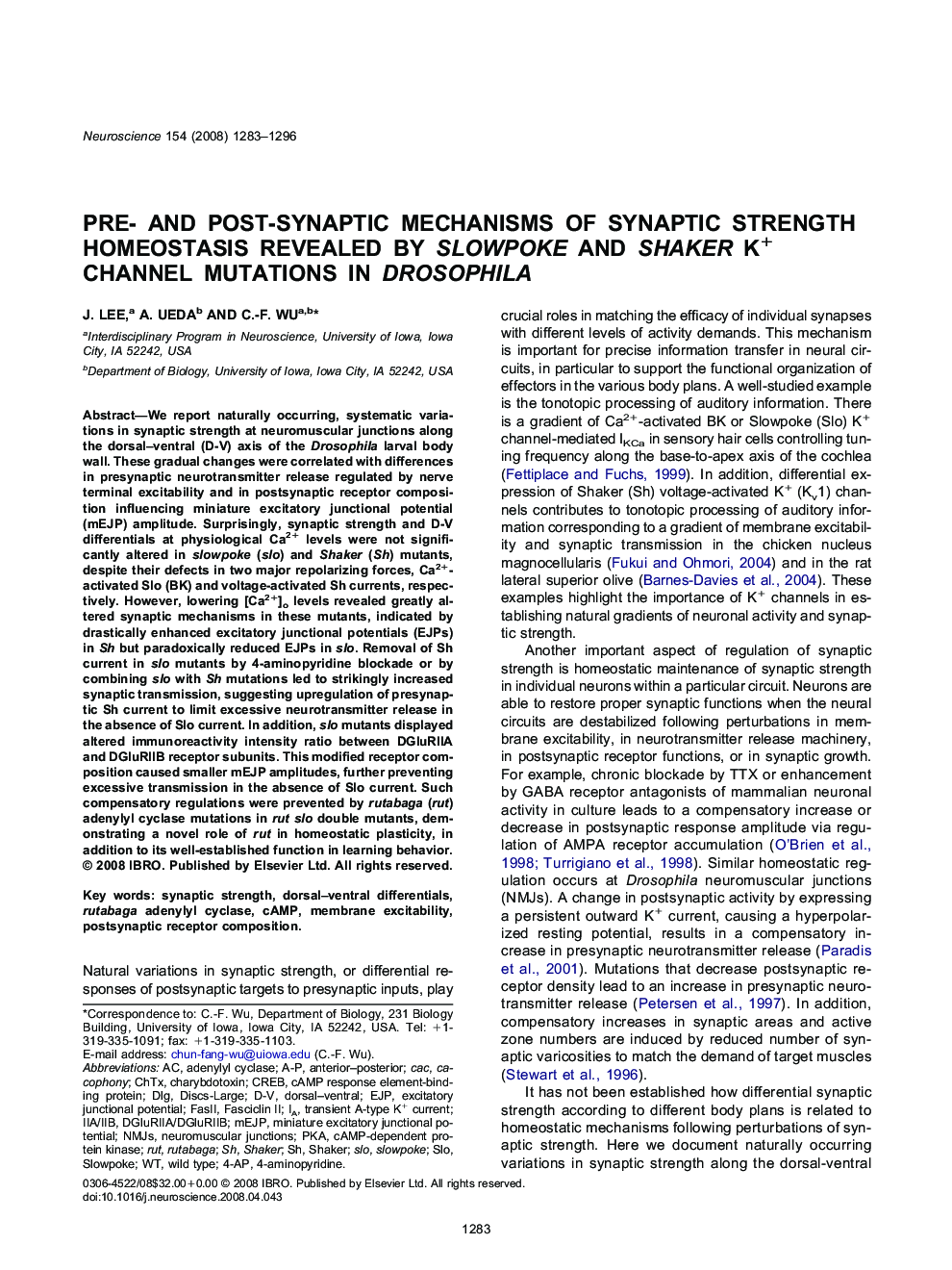| Article ID | Journal | Published Year | Pages | File Type |
|---|---|---|---|---|
| 4340395 | Neuroscience | 2008 | 14 Pages |
We report naturally occurring, systematic variations in synaptic strength at neuromuscular junctions along the dorsal–ventral (D-V) axis of the Drosophila larval body wall. These gradual changes were correlated with differences in presynaptic neurotransmitter release regulated by nerve terminal excitability and in postsynaptic receptor composition influencing miniature excitatory junctional potential (mEJP) amplitude. Surprisingly, synaptic strength and D-V differentials at physiological Ca2+ levels were not significantly altered in slowpoke (slo) and Shaker (Sh) mutants, despite their defects in two major repolarizing forces, Ca2+-activated Slo (BK) and voltage-activated Sh currents, respectively. However, lowering [Ca2+]o levels revealed greatly altered synaptic mechanisms in these mutants, indicated by drastically enhanced excitatory junctional potentials (EJPs) in Sh but paradoxically reduced EJPs in slo. Removal of Sh current in slo mutants by 4-aminopyridine blockade or by combining slo with Sh mutations led to strikingly increased synaptic transmission, suggesting upregulation of presynaptic Sh current to limit excessive neurotransmitter release in the absence of Slo current. In addition, slo mutants displayed altered immunoreactivity intensity ratio between DGluRIIA and DGluRIIB receptor subunits. This modified receptor composition caused smaller mEJP amplitudes, further preventing excessive transmission in the absence of Slo current. Such compensatory regulations were prevented by rutabaga (rut) adenylyl cyclase mutations in rut slo double mutants, demonstrating a novel role of rut in homeostatic plasticity, in addition to its well-established function in learning behavior.
